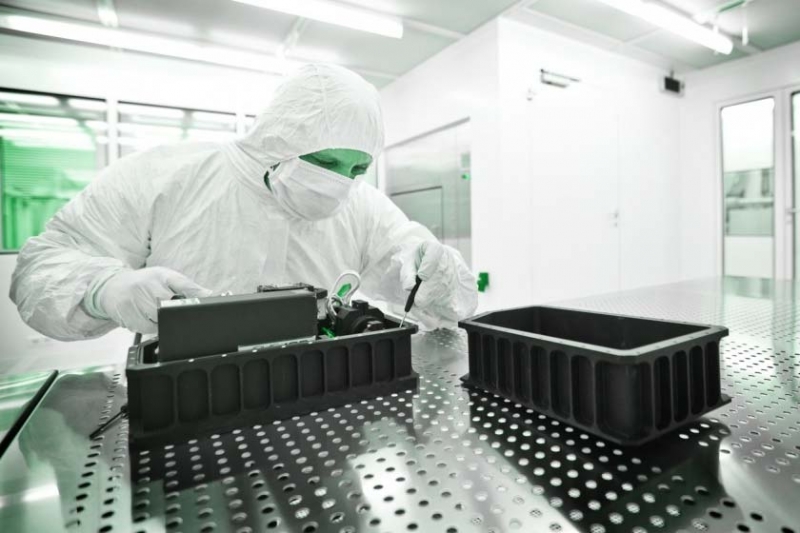There are three main questions to ask in order to determine what classification is needed for a particular cleanroom application:
- What are my sources of contamination?
- What size particles do I need to filter out?
- How much air do I have to circulate to get that contamination out?
How Contamination Relates to Cleanroom Classification
A typical cleanroom is designed to keep the outside environment from getting in. Once an environment has been built, the two things that cause contamination in it are the people and the process. So, what contamination is generated by people, and what contamination is generated by the process is what needs to be determined.
Often times one can build a lower classification of cleanroom, though still maintain a cleaner environment by enhancing operations within the cleanroom - for instance, garmenting workers to a higher standard. Positioning return air grills and filtration systems at optimal locations within the cleanroom can result in cleaner areas within the environment, thus bringing the cleanroom classification to a lower level in those areas. Understanding the contamination sources and combating those with solid cleanroom design and enhanced operations can provide significant cost savings from both construction and operational standpoints.
How Particle Size Impacts Classification
One of the most important factors to determine when constructing a cleanroom is what size of particle will need to be filtered out. Is it any size particle? Is it a specific size or range of particles? Often times, people look at the cleanroom classification (see chart below) and they go to the lowest level particle count to determine what classification they need.
An example of this would be someone that determines they need less than 100 particles per square foot within their cleanroom. Based on this information, they determine that the classification will need to be an ISO 5 (or class 100) cleanroom. However, an issue can arise if they do not take into account the size of the particle they are trying to filter out.
There’s a significant difference in the classification that is needed if that particle is 1/2 micron in size versus 5 microns in size (see Micron description below). If they think they’re looking at a ½ micron sized-particle, but really the particle that is a problem for them is a 5 micron particle – From a cleanroom classification, this doesn’t translate to an ISO 5 cleanroom (or class 100). This actually translates into an ISO 8 cleanroom (or class 100,000).
How Air Circulation Affects Classification
Any time the classification goes down a class, or up a class - for instance from an ISO 8 (class 100,000) to an ISO 7 (class 10,000) - that’s going to take twice as much air. The cost of filtering and moving air is a significant cost of operating a cleanroom. This process translates all the way down through to the number of filters that are needed, the amount of return air space that is needed, the amount of air conditioning that will be needed to cool that return air and so forth. And this multiplies itself as one goes through the process.
A common mistake involves a client asking for a cleanroom that is too tall, or otherwise in excess of what they really need. If you require a cleanroom with an 8-foot ceiling height, but decide to make it taller in order to align better with the surrounding environment and make it 10-feet high, that changes the volume of the area by 25%. Therefore they’re increasing the amount of air needed for that cleanroom by 25% because they decided on building a 10-foot height, when they only needed an 8-foot height.











